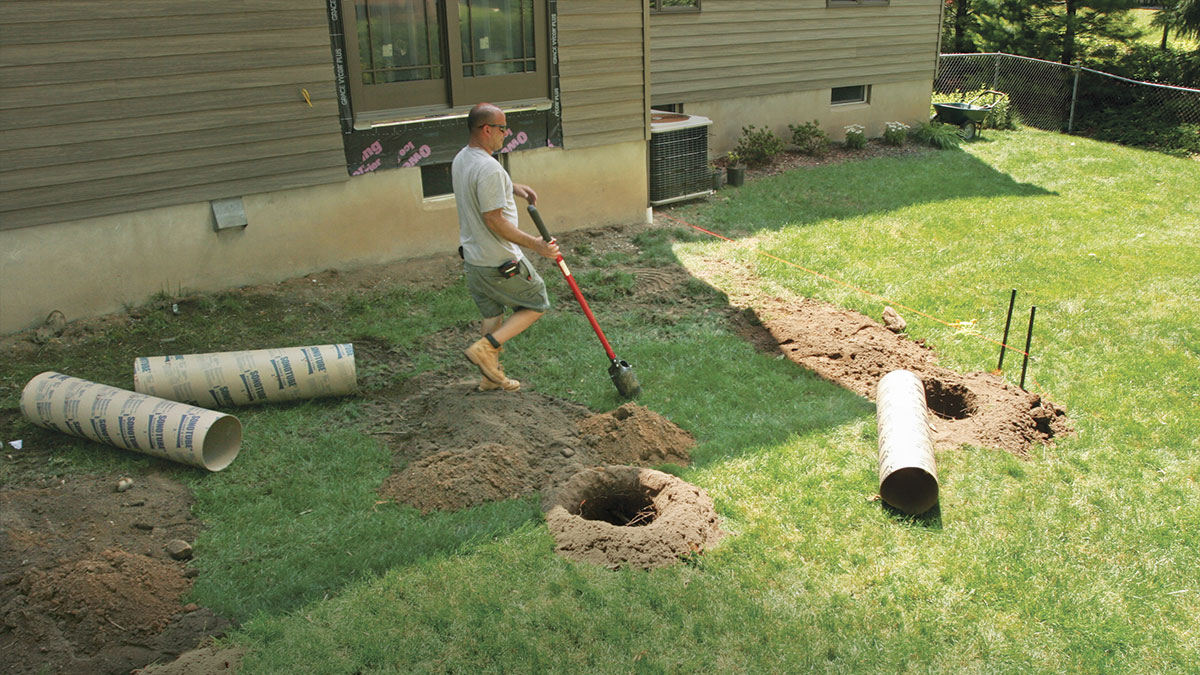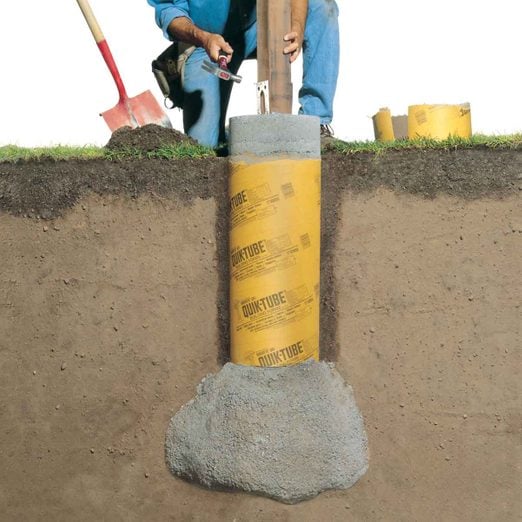Picking the Right Deck Footings for Security and Durability
When it involves building a deck, among one of the most vital decisions you will certainly make is selecting the best grounds for security and resilience. The longevity and security of your deck depend heavily on the kind of footings you pick, as they supply the vital support and security to hold up against the test of time. With a myriad of options readily available, it can be overwhelming to figure out which footings are best suited for your certain needs. In this conversation, we will discover the various sorts of deck footings, take into consideration the crucial elements to consider when deciding, and dive into the benefits and drawbacks of different alternatives. By the end, you will have a more clear understanding of the selections available and be far better geared up to make an educated decision for your deck task.
Sorts Of Deck Footings
There are numerous kinds of deck grounds that can be utilized, each offering unique advantages and factors to consider. One common sort of ground is the concrete pier ground. These grounds include a cylindrical hole loaded with concrete, which provides a solid foundation for the deck messages. Concrete pier footings are relatively simple to set up and use excellent stability, making them a popular choice for many deck projects.
These grounds are set up by screwing them into the ground, which develops a safe foundation for the deck. They additionally enable for simple change and progressing of the deck if needed.
Alternatively, some builders choose precast concrete footings. These grounds are made from durable concrete and can be found in numerous sizes and shapes to fit different deck layouts. Precast concrete footings are practical to install and provide a secure base for the deck structure.
Lastly, one more choice is the post-in-anchor ground system. This type of ground includes driving a steel anchor right into the ground and connecting it to the deck post. It supplies versatility in regards to placing the deck articles and appropriates for decks with lightweight structures.
When choosing the best sort of deck ground, it is necessary to take into consideration variables such as soil conditions, deck lots, and local building ordinance (Deck Footings). Consulting with an expert contractor or architectural engineer can aid guarantee the ideal ground is chosen for a secure and stable deck
Aspects to Take Into Consideration When Selecting Footings
When selecting the ideal grounds for a deck, it is critical to thoroughly consider numerous elements such as dirt problems, deck lots, and adherence to regional building codes. These aspects play a considerable duty in making sure the stability and toughness of the deck structure.
The kind of dirt on which the deck will be built figures out the type of footings required. On the various other hand, decks constructed on clay or large dirts may need grounds that can suit the dirt's propensity to increase and agreement.
Another crucial variable is the deck load. The weight of the deck, including the products utilized and any kind of potential real-time tons such as furnishings or celebrations, must be considered when picking footings. The footings need to be created to bear the weight of the deck and disperse it equally to stop any kind of architectural problems or failures.
Last but not least, adherence to neighborhood structure codes is vital. Structure codes vary from region to area, and it is important to follow the specific demands set by the regional authorities. Deck Footings. These codes make sure that the deck is constructed safely and meets the needed requirements for architectural stability and load-bearing capability
Concrete Footings: Pros and Disadvantages

When made use of as the structure for a deck,Concrete grounds provide several benefits and disadvantages. On the favorable side, concrete grounds offer outstanding security and resilience. Concrete is a strong and stiff product that can support heavy loads and stand up to numerous weather. It likewise has a lengthy life-span, making it a trustworthy selection for long-term use.
Another advantage of concrete footings is their flexibility. They can be see post poured into various sizes and shapes to suit different deck styles and setups. Concrete footings can be personalized to fit the particular needs and requirements of the deck framework.
Nonetheless, there are additionally some downsides to making use of concrete grounds. One major downside is the expense and labor included in their installation. Concrete footings call for excavation and often require the aid of hefty equipment. This can raise the total price of useful source the deck job and might need expert aid.

Helical Piers Vs. Sonotubes: Which Is Much better?
In thinking about the foundation choices for a deck, the contrast in between helical piers and sonotubes is essential in figuring out the remarkable option. They are twisted into the ground utilizing hydraulic machinery, offering a steady and durable foundation for the deck.
The helical plates on the piers create a solid hold with the soil, avoiding any kind of motion or shifting of the deck. Sonotubes, on the other hand, count entirely on the concrete filling for security, which may not supply the exact same degree of stamina and resistance.
In terms of installment, helical piers are relatively simpler and faster to install contrasted to sonotubes. The hydraulic machinery made use of to turn the piers into the ground makes certain a reliable and fast procedure. Sonotubes, on the other hand, need excavating openings and putting concrete, which can be labor-intensive and taxing.
Additionally, helical piers are a more flexible alternative. If required, they can be used in different dirt problems and can be readjusted or reinforced. Sonotubes, on the other hand, might call for additional support, such as rebar, in particular soil conditions or locations with high lots requirements.
Choosing the Right Footings for Your Deck's Measurements
For ideal architectural integrity, it is important to very carefully pick the appropriate grounds that align with the dimensions of your deck. The measurements of your deck, including its length, size, and elevation, play a considerable duty in figuring out the kind and size of footings called for.
When selecting grounds for your deck, it is important to think about the load-bearing capacity of the dirt. The weight of the deck, incorporated with the weight of any furniture or individuals on it, exerts a substantial force on the footings (Deck Footings). Therefore, it is important to select footings that can appropriately sustain this weight without sinking or shifting over time.
Bigger decks with greater measurements call for larger footings to provide sufficient security and assistance. The form of the footings, whether they are rounded or you can check here square, depends on the design and design of the deck.
Verdict
In final thought, picking the best deck grounds is crucial for making sure security and resilience. Variables such as the type of grounds, the deck's measurements, and the pros and cons of different alternatives ought to be taken into consideration.
These footings consist of a round hole loaded with concrete, which gives a solid structure for the deck posts. Concrete pier grounds are reasonably easy to set up and offer superb security, making them a preferred choice for lots of deck tasks.
Precast concrete footings are hassle-free to mount and provide a steady base for the deck structure.
It supplies flexibility in terms of positioning the deck articles and is ideal for decks with lightweight structures.
Concrete grounds supply numerous benefits and negative aspects when made use of as the structure for a deck.